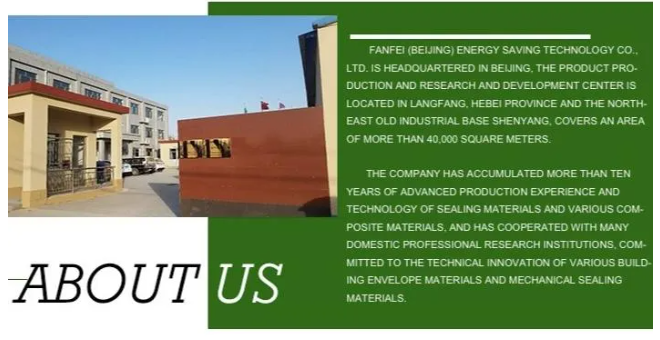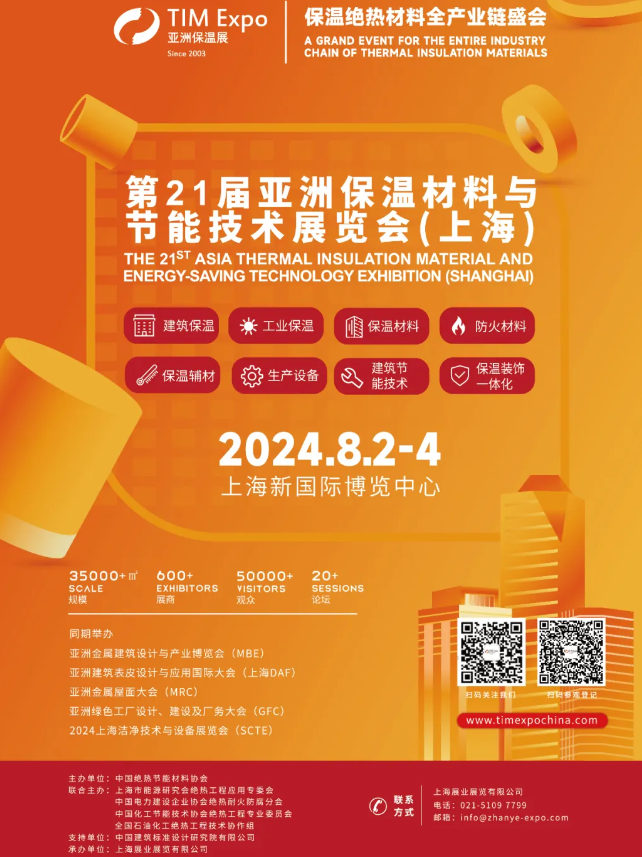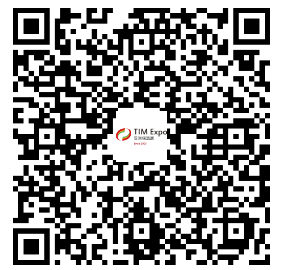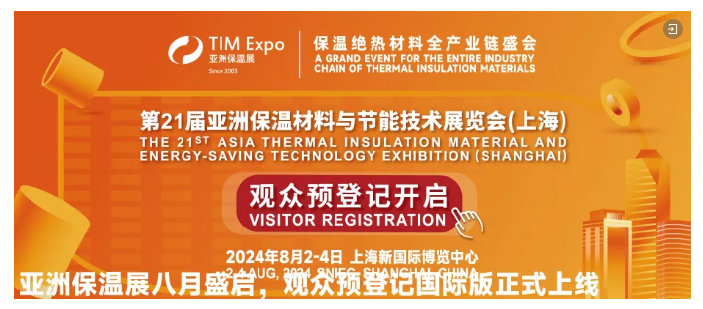【展商推荐】泛飞(北京)节能科技有限公司

泛飞(北京)节能科技有限公司
Fanfei Energy Saving Technology Co.,Ltd.
展位号:W5K01
2024年8月2日-4日
上海新国际博览中心
公司介绍 Company Introduction
泛飞节能科技是专注于建筑围护结构气密性和水密性产品研发和制造的高新技术企业。自2016年成立以来快速发展壮大,先后成立了泛飞(北京)节能科技有限公司、泛飞(沈阳)复合材料有限公司(生产基地)。拥有“畔竹”“吉舍美舍”“PANZHU WRAP”“PANZHU FIBER”等知名品牌及多项实用新型专利。主要产品有:防水透气膜、隔汽膜、反射隔热膜、呼吸纸等,取得了GB/T 19001质量管理体系及GB/T 24001环境管理体系等多个国家级认证。产品广泛应用于钢结构、木结构、幕墙及被动式建筑的围护结构中,参与了深圳国际会展中心、徐州淮海会展中心、青岛红岛高铁站、黑龙江抚远冷链物流园区等多项重点工程建设,与国内多家大型央企、房地产企业、钢结构企业等建立密切的战略伙伴关系。产品远销欧美、东南亚、南美等多个国家和地区。
泛飞节能科技秉承“为世界建造健康会呼吸的好房子”企业文化及理念,以实现“碳达峰、碳中和”为己任。面对当年能源及环境问题,提供科技、绿色、创新的解决方案。
Since its establishment in 2016, Fanfei Energy Saving Technology Co.,Ltd. has been focusing on the development and manufacturing of air-tight and water-tight products for building envelopes. We Successively established Fanfei (Beijing) Energy Saving Technology Co., Ltd. and Fanfei (Shenyang) Composite Materials Co., Ltd. Owns: "畔竹", , "PanzhuWrap", "PanzhuFiber" and other registered brands and a number of utility model patents. The main products are: waterproof and breathable membrane, vapor membrane , reflective insulation membrane and house wrap. We have obtained the certifications of GB/T19001 quality management system, GB/T24001 environmental management system and lots of national certifications. The products are widely used in steel structure, wooden structure, curtain wall and passive house enclosure structure. We also participated in the construction of many key projects, and established close strategic partnerships with a number of well-known steel structure metal roof builders from central enterprises, state-owned enterprises, and private enterprises in China. On the other hand,the products are also exported to Europe, America, Southeast Asia, South America and many other countries around the world.
Fanfei Energy Saving Technology adheres to the corporate culture and concept of "building a healthy and breathing house for the world", and takes it as its mission to achieve "carbon peak and carbon neutrality". In the face of energy and environmental problems of the year, we provide scientific, green and innovative solutions.

防水透气膜
Breathable membrane
防水透汽膜(呼吸纸)是铺覆在建筑保温层之外的一层薄膜,而防水透汽膜技术正是通过加强建筑气密性、水密性来达到节约能耗、保护人居环境、从而提高对建筑的耐久性及舒适性,可更有效的保证维护结构(外墙及屋面)的干燥,并起到显著的效果。
1.加强建筑气密性、水密性
实践证明,无论采用何种立面形式,或屋面铺设形式,都无法保证围护结构的密闭性。以外墙来说,抹灰的开裂难以避免,挂板的搭接难以严密,而单纯的砖石砌块则更无法做到“不透风的墙”。这些问题,在建筑阴阳角,搭接处及门窗周围更为显著。通过这些非密闭的孔隙,气流及水汽即可侵入围护结构,从而对建筑的能耗、耐久性及舒适性产生严重影响。
2.建筑能耗
雨水及随气流侵入围护结构的水汽将降低保温层的有效热阻值,从而导致更多的能耗。当然,水汽对不同保温材料的影响是有所区别的。侵入的气流将在建筑围护结构内部形成对流循环,也将降低保温层的有效热阻值,导致更多的能耗。同样,气流对不同保温材料的影响是有所区别的。气流侵入室内,人们将不得不采用更为庞大的暖通设备来弥补热/能量的损失,从而增加建筑能耗。
3.建筑耐久性
侵入围护结构内部的水汽,将导致墙体空穴形成水汽凝结(所谓冷凝水),加速建筑材料的老化,如钢材的锈蚀和木材的腐朽,从而对建筑的耐久性产生严重影响。
4.建筑舒适性
气流的侵入,将对对室内的热工舒适性产生不利影响;带来不同建筑构件上沉积的污染物和来自建筑材料或室外的放射物,从而对室内空气质量造成影响;进入建筑围护结构内部的水汽,为围护结构的水汽凝结创造了条件,导致霉菌形成,从而对室内空气质量及居住者的健康造成影响。可见,加强建筑的气密性,水密性对建筑节能、环保至关重要。
5.建筑透汽性
由于室内外温差的存在,建筑围护结构内部的结露是难以避免的。但实际上,只有当围护结构一直处于潮湿的状态时,才会引发潮气问题,导致对建筑能耗、耐久性及舒适性的不利影响。因此,为了避免问题的发生,保证建筑的透汽性,使其可以通过将水汽扩散到室外的形式达到自然干燥,则显得尤为重要。
Waterproof vapor permeable membrane (breathing paper) is a layer of film spread outside the building insulation layer, and the waterproof and vapor permeable membrane technology is to save energy consumption and protect the living environment by strengthening the air tightness and water tightness of the building, so as to improve the durability and comfort of the building, and can more effectively ensure the dryness of the maintenance structure (exterior wall and roof), and play a significant effect.
1. Strengthen the air tightness and water tightness of the building
Practice has proved that no matter what kind of façade form or roof laying form is used, the airtightness of the envelope cannot be guaranteed. As far as the exterior wall is concerned, the cracking of the plastering is unavoidable, the lap of the hanging board is difficult to tighten, and the simple masonry block cannot achieve the "impermeable wall". These problems are more pronounced in the yin and yang corners of the building, the lap joints, and the surrounding doors and windows. Through these non-confined pores, airflow and water vapor can penetrate the envelope, which can have a serious impact on the building's energy consumption, durability and comfort.
2. Building energy consumption
Rainwater and water vapour that enters the envelope with the air flow will reduce the effective thermal resistance of the insulation, resulting in more energy consumption. Of course, the effect of water vapor on different insulation materials is different. The intrusive airflow will create convective circulation inside the building envelope and will also reduce the effective thermal resistance of the insulation, resulting in more energy consumption. Similarly, the effect of airflow on different insulation materials is different. When airflow intrudes into the room, people will have to use larger HVAC equipment to compensate for the loss of heat/energy, thus increasing the energy consumption of the building.
3. Building durability
Water vapour that invades the interior of the envelope will lead to the formation of water vapor condensation (so-called condensation) in the wall cavities, which will accelerate the aging of building materials, such as rust of steel and decay of wood, which will have a serious impact on the durability of the building.
4. Architectural comfort
The intrusion of air currents will adversely affect the thermal comfort of the room, bring pollutants deposited on different building components and radiation from building materials or outdoors, which will affect the indoor air quality, and the water vapor entering the building envelope will create conditions for the condensation of water vapor in the envelope, leading to the formation of mold, which will affect the indoor air quality and the health of the occupants. It can be seen that strengthening the air tightness and water tightness of the building are very important for building energy conservation and environmental protection.
5. Building permeability
Due to the temperature difference between indoor and outdoor, condensation inside the building envelope is unavoidable. In practice, however, it is only when the envelope is constantly damp that moisture problems can occur, adversely affecting the building's energy consumption, durability and comfort. Therefore, in order to avoid problems, it is particularly important to ensure that the building is vapor permeable, so that it can achieve natural drying by diffusing water vapor to the outdoors.


隔汽膜
vapor barrier
当水蒸气透过结构层进入保温层后,会使保温层含水率增加,导热系数也随着增大,致使保温层保温能力下降。又由于保温层上面的防水层是不透气的,因此保温层中的水分不能扩散掉,此时保温层会逐渐随着水分的增加而失去保温作用,导致柔性防水鼓包、龟裂,使防水层失去防水能力。解决这一问题关键是在保温层下、找平层上设置一道隔气层,把室内传来的水蒸气阻隔在下面。
A vapor barrier, also called a vapor retarder, is a layer in the building envelope that prevents water vapor from entering the wall cavity. There are three different classes of vapor barriers. The class of vapor required depends on the climate zone and cladding type. In many cases, no vapor retarder is required.
Moisture control is critical in today’s airtight and well-insulated homes. In the past, vapor barriers were often installed on the inside of the building envelope to keep moisture from condensing inside the wall cavity during winter, which could encourage mold growth. But this can potentially keep walls from drying out if moisture condenses inside the wall during summer months. Building science research has refined when vapor vapors should be used, depending on both the climate and the type of cladding used.
Vapor barriers are classified by their vapor permeance, or perm rating, which is a measure of the rate of moisture diffusion through the material. Class I vapor barriers have a vapor permeance of 0.1 perm or less. Class II vapor barriers have a vapor permeance of between 0.1 and 1.0 perm. Class III vapor retarders have a vapor permeance of 1.0 perm or more.
No vapor barrier is required for mild or hot climates. Building code does require them in colder climates (zones 5 through 8), but in many cases a Class III vapor barrier like latex paint or a Class II barrier like Kraft-faced insulation is adequate.


反射隔热膜
Reflective insulating film
反射隔热膜又称铝箔隔热卷材、阻隔膜、隔热膜、隔热箔、拔热膜、反射膜等。由铝箔贴面+聚乙烯薄膜+纤维编织物+金属涂膜通过热熔胶层压而成,铝箔卷材具有隔热保温、防水、防潮等功能。铝箔隔热卷 材的日照吸收率(太阳辐射吸收系数)极低(0.07)具有卓越的隔热保温性能,可以反射掉93%以上的热量,被广泛应用于建筑屋面与外墙隔热保温。
Reflective heat insulation film is also known as aluminum foil heat insulation coil, barrier film, heat insulation film,Thermal insulation foils, heat drawing films, reflective films, etc. It is made of aluminum foil veneer + polyethylene film + fiber braid + metal coating film laminated by hot melt adhesive, aluminum foilThe membrane has the functions of heat insulation, waterproof, moisture-proof and so on. The sunlight absorption rate (solar radiation absorption coefficient) of aluminum foil insulation coil is extremely low (0.07), has excellent thermal insulation performance, can reflect more than 93% of the heat, and is widely used in building roof and exterior wall thermal insulation.

泛飞(北京)节能科技有限公司
地址:北京市通州区嘉创路5号
泛飞(沈阳)复合材料有限有限公司
地址:沈阳市于洪区平罗湾经济区平罗中路
产品销售及对象


2024亚洲保温展预登记通道开启

扫码登记 预约参观参会
TIM EXPO
亚洲保温展,为碳中和而行!
· TIM Expo项目组 ·
参展咨询
抢位热线:021-5109 7799
邮箱:info@zhanye-expo.com
参观咨询/市场合作
电话: 021-5109 7799
邮箱: nicoleshen@zhanye-expo.com

“
官方微信
扫码关注我们

“
官方抖音
保存二维码跳转关注

“
展会小助手
加入行业交流群














